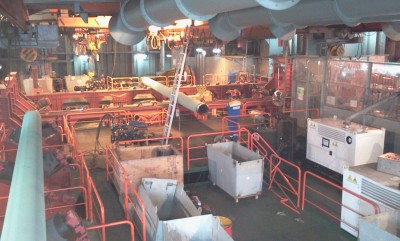4 Rules For Running A Construction Company

As the owner of a construction business, you will often find that your workload is relentless and demanding. The construction industry is an undeniably exciting one that offers endless stimulation, but it’s also incredibly time-consuming, and just ensuring that your business operations progress on a schedule is often a full-time job in and of itself.
However, as the owner of the company, you will find that you have responsibilities outside of your own workload. As the head of the company, you set the standard, and the rules that you live by will influence the entire operation, and the decision-making of everyone who works for, and with, you.
As a result, it’s worth taking the time to establish a set of rules to live by; rules that can shape and improve not only your own working environment but also filter through to the rest of the company to ensure maximum efficiency and productivity.
In an effort to make the process of formulating your rules as simple as possible, below, we have put together a number of suggestions. Whether you choose to focus on integrating all of these rules into your business or just a few, you can be sure that by focusing on these areas, you will be able to ensure that both your own experience and that of your wider business improve in future.
RULE #1: Watch the forecast like a hawk
Construction is a job that tends to require spending a lot of time outdoors, which means you are more vulnerable to the weather than business owners who work from the comfort of an office.
As a result, you will need to be willing to watch the weather forecast religiously, as well as interpreting what it means for any projects you are working on.
This may mean preparing a site for bad weather, or outright postponing the project until a literal storm has passed – neither of which is ideal, but both are preferable to ignoring the forecast and being surprised when the weather turns for the worse.
RULE #2: Subcontracting requires preparation and research

Subcontractors make the construction world go around, and you will likely need to liaise with this type of business frequently over the course of running your construction company.
By far the most important part of this process is finding the right subcontractor for the job. Ideally, you’re looking for niche subcontractors, as specialization tends to indicate genuine expertise rather than a “catch-all” approach that may lack overall focus.
There are two key components to finding the right subcontractor: you have to know what you need, and the subcontractor has to have the experience necessary to complete the work.
If you go into the process of hiring a subcontractor with the simple thought “I need a subcontractor to improve the ground I’m building on”, then this is unlikely to result in you finding the right company for the job.
However, if you can think in terms of specifics, you’ll be in far better shape; you could switch to thinking “I need a company who can produce aggregate stone columns to improve the ground I’m building on”; then you can opt for the likes of HelitechCCD.com, which means you’ll be able to work with a genuine specialist who is able to complete the work to the highest possible standard.
If you approach the hiring of every subcontractor with this same approach – identify exactly what you need, then find a niche subcontractor for the work – then you should always be able to find the right company for the job.
RULE #3: Always acknowledge the link between safety and time management

Construction is a dangerous industry, and unfortunately, many of the disasters that construction companies face are all too preventable. However, it seems fair to assume that no one goes into the construction industry intending to be laissez-faire about safety – so why do safety practices so frequently get abandoned?
Simple: time pressure. When time is ticking down and a completion date is looming, adherence to safety is often abandoned in pursuit of quicker work.
This means that while safety is an important focus in and of itself, so is time management, as the two are inextricably linked to one another. If at any point in a project, you are tempted to rush – or suspect your employees are rushing – then this has to be your cue to slam the brakes on, take a moment, and carefully assess how best to proceed.
It’s better to be late completing a project than to ignore safety measures, and this is an attitude that you need to encourage all employees to adopt into their own working life too.
RULE #4: Good communication is paramount

Communication is vitally important in any sector, but particularly in the construction sector. As construction projects tend to be long and often arduous, the ability to communicate your expectations is vitally important to ensure that projects are able to proceed as smoothly as possible.
This need for efficient communication spreads beyond simple communication with your employees.
As a construction business owner, you will need to effectively communicate with the owner of the project you are working on, other contractors, subcontractors, regulatory bodies, and more besides, It is therefore vital to ensure you improve your communication skills in general prior to entering this industry; there’s a helpful guide to achieving this on Entrepreneur.com, and following along with these tips will definitely stand you in good stead in the future.
Furthermore, the better your communication skills are, the more your employees will be encouraged to develop their own – which should benefit your entire business.
In Conclusion
Setting rules that you, and by extension, your company, seek to live by is incredibly important in an industry as fast-paced and challenging as construction.
By focusing on the above areas and keeping these rules at the forefront of everything you do, you should be able to ensure that your construction business is able to thrive in this challenging, but rewarding, sector.
What rules do you follow as a construction company?






